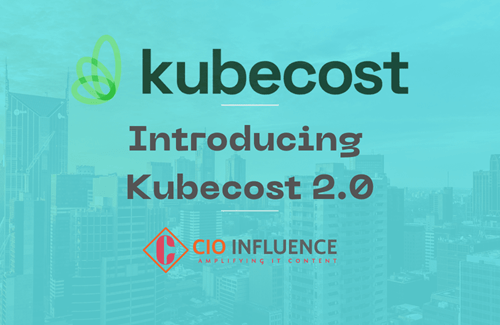Significant additions to the Kubecost platform—the most-used cloud-agnostic tool for Kubernetes cost monitoring and visibility—further reduce organizations’ Kubernetes-related cloud costs
Kubecost, the comprehensive solution for monitoring, managing, and optimizing Kubernetes spend at scale, today announced the launch of Kubecost 2.0. The release provides new tools and capabilities purpose-built to monitor and optimize Kubernetes-related cloud expenses even more easily and significantly—including for large-scale enterprises in the Fortune 100 and in complex and multi-cloud environments.
CIO Influence Interview with Steve Stone, Head of Rubrik Zero Lab
Currently, Kubecost provides real-time cost visibility and insight for teams using Kubernetes. Kubecost is trusted by thousands of leading companies, from Adobe to Under Armour, to monitor costs across all major cloud providers, and in on-prem and air-gapped environments.
Cloud and Kubernetes costs continue to face upward pressure. The new CNCF Cloud Native FinOps + Cloud Financial Management Microsurvey found that overprovisioning, a lack of Kubernetes cost awareness and visibility, and Kubernetes cluster sprawl were the biggest factors leading organizations to overspend. As enterprises accelerate strategies to scale their use of Kubernetes without overspending, Kubecost continues to be—far and away, per the CNCF survey—the most deployed cloud-agnostic tool for cost monitoring and visibility.
At the time of this announcement, Webb Brown, co-founder and CEO of Kubecost, said, “Modern businesses require real-time data and insights that can inform smarter decision-making across their organization, and understanding where and how their cloud spend is actually allocated is an increasingly critical part of that equation.”
Webb added, “With high-performance cost forecasting, anomaly detection, and other capabilities, enterprises can cut tens of millions of dollars from cloud bills—budget and resources that can be applied elsewhere to grow their business. Kubecost 2.0 further empowers our customers to safely cut costs by avoiding unforeseen spikes, to understand consumption patterns with deeper insights, to make more immediate and data-backed decisions, and to deliver consistent and predictable optimization practices across their organizations.”
Top AI ML Insights for CIOs and CISOs:
How Security Culture Will Define Success in the Era of AI
Highlights of Kubecost 2.0 include:
- Advanced network monitoring: Newly released Kubecost network monitoring enables teams to see Kubernetes network expenses—traditionally a mysterious area that complicates identifying the reasons behind unexpected network cost increases. Enterprises typically achieve substantial cost reductions between 30-50% and avoid unexpected cost surges by gaining insight into network expenses.
- Collections: Unified reporting empowers teams to manage chargeback and showback processes across multi-cloud and Kubernetes environments. This approach simplifies cost distribution, reducing unnecessary expenditure tracking. Enhanced visibility through unified reporting and analysis facilitates well-informed decisions and strategic plans guided by observed consumption patterns.
- Kubecost Actions: This functionality addresses the challenge of manual intervention within Kubernetes-based optimization workflows and allows users to run automation that can save them money on their Kubernetes spend in just a couple of clicks. By providing a dedicated “Actions” page, Kubecost users can easily view, create, and audit automation workflows. The tool simplifies executing actions such as dynamic request right-sizing, continuous right-sizing, cluster turndown, and spot management, saving time and ensuring consistent optimization practices.
- Cost forecasting: Improved forecasting for cloud and Kubernetes spending allows FinOps and engineering teams to build out cost projections for different timeframes and entities easily. Powered by machine learning, this tool enables informed decisions, optimization exploration, and financial stability, supported by enhanced visibility from unified reporting and analysis.
- Anomaly detection: Anomaly detection alerts teams to budget overages and optimization changes by flagging spend anomalies—enabling swift action to cloud and Kubernetes environments. These alerts are necessary to notice spending deviations that can quickly cause cost overruns.
- Improved real-time cost estimation: Kubecost will now dynamically adapt real-time cost estimations to include resource discounts, enhancing budgeting accuracy and decision-making. This unique approach aligns closely with reconciled costs, addressing discrepancies and ensuring precise financial planning, a key differentiator in cost management.
From born-in-the-cloud startups to large enterprises modernizing and scaling cloud infrastructure, Kubecost continues to lead the industry in Kubernetes cost monitoring, management, and optimization. InfoWorld recently named the company the 2023 Technology of the Year in Cloud Cost Management, stating that “Kubecost has firmly established itself as the de facto standard for measuring the cost of Kubernetes infrastructure, from start-ups to large corporations. There isn’t a clear alternative.”


